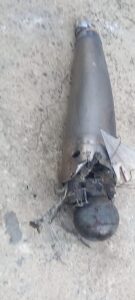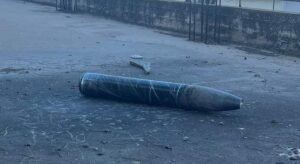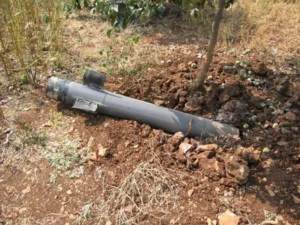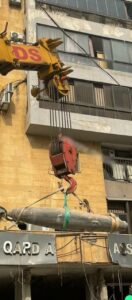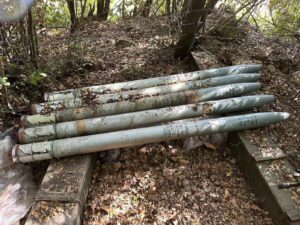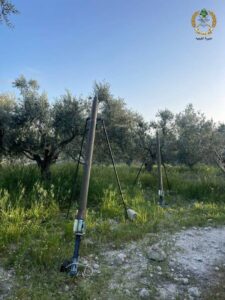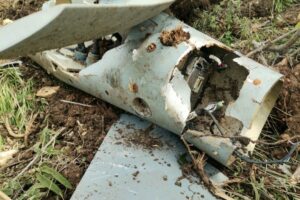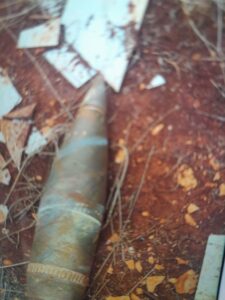Analyst Note:
This image shows fragments of a BLU-109C/B 2,000-pound penetrator bomb. The remnant with visible threads is part of the aft closure ring attached to the base of the bomb. This features nine vent holes as an ‘insensitive munition’ (IM) safety feature. Three of the threaded vent holes are visible on this fragment. (ARES)

 A small country in the Middle East, bordering Syria to the north and east and Israel to the south
A small country in the Middle East, bordering Syria to the north and east and Israel to the south 
















